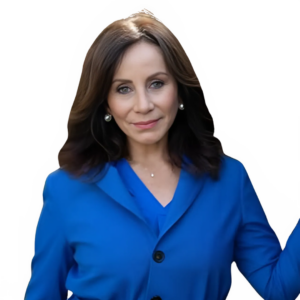 In the latest episode of Inside Personal Growth, Greg Voisen sits down with Dr. Maria Silva-Palacios, the accomplished author of Safe Zone: Cultivating Engagement One Leader at a Time, to explore her journey of transforming safety culture within high-stress industries. With a background in kinesiology, a doctorate in organizational change, and over 20 years in leadership roles, Dr. Silva-Palacios is a true cultural change agent dedicated to fostering safety and engagement in the workplace.
In the latest episode of Inside Personal Growth, Greg Voisen sits down with Dr. Maria Silva-Palacios, the accomplished author of Safe Zone: Cultivating Engagement One Leader at a Time, to explore her journey of transforming safety culture within high-stress industries. With a background in kinesiology, a doctorate in organizational change, and over 20 years in leadership roles, Dr. Silva-Palacios is a true cultural change agent dedicated to fostering safety and engagement in the workplace.A Career in Safety and Health
Dr. Silva-Palacios’s career began at Southern California Edison, where she saw firsthand how minor changes in injury prevention could create major improvements in employee well-being. Her work included implementing injury prevention programs that reduced common workplace injuries among linemen, particularly strains and sprains. Through these efforts, Dr. Silva-Palacios not only improved safety but also contributed to a more engaged and resilient workforce.
The Power of Emotional Safety
Dr. Silva-Palacios emphasizes the importance of emotional safety, particularly in high-stress environments like utility companies. Her approach focuses on self-awareness, self-management, and authentic leadership. She encourages leaders to operate from a place of integrity, empathy, and compassion, creating a culture of trust. By fostering a supportive environment, leaders can inspire employees to feel valued and safe.
Addressing Corporate Hypocrisy
One of the biggest challenges she identifies is “corporate hypocrisy”—where leaders say safety is a priority but fail to follow through. According to Dr. Silva-Palacios, leaders need to “walk the talk” and align their actions with their words. This integrity builds trust and prevents the erosion of employee engagement.
Navigating Production Pressure
In high-pressure industries, safety often takes a back seat to productivity. Dr. Silva-Palacios has seen how production pressures lead to unsafe shortcuts, resulting in serious injuries or even fatalities. She advocates for leaders who prioritize safety over expediency, despite the temptation to cut corners.
Using Authentic Leadership to Build Trust
Dr. Silva-Palacios encourages leaders to adopt Authentic Leadership Theory, which helps cultivate trust and respect. When leaders demonstrate authenticity and integrity, they build a culture where employees feel secure, valued, and more motivated to follow safety protocols.
For more insights from Dr. Silva-Palacios, visit her on LinkedIn or Facebook, and don’t forget to grab a copy of her book, Safe Zone, on Amazon.
You may also refer to the transcripts below for the full transcription (not edited) of the interview.
Welcome back to Inside personal growth. This is Greg Voisen, the host of inside personal growth, and joining us today. You're in the Los Angeles area, about where and exactly are you? Maria.
I am in Lakewood, which is just a hop skip and a jump from Long Beach, California. Okay,
so she's in Lakewood. The book is called Safe John zone. Safe Zone cultivating engagement, one leader at a time. And it's Dr Maria Silva. And I want to pronounce your last name, hyphenated last name. How do you say it? Alaska velascos, so, Dr Maria Silva, palascos, Alaska. Velasquez, you can go to Amazon to get this book. We'll put a link to Amazon as well. It is a hardback book which is really cool. And look at it. It's not a big read for all of you out there looking you can read this fast and you can learn a lot. So Maria, I'm going to let the listeners know a little bit about you is Dr Maria Silva plaskos. She served in many leadership roles in the health, fitness and safety industry for more than 20 years, with a doctorate degree in organizational change and leadership and a Masters of Science in leadership and management. She is a cultural change agent dedicated to fostering trusting relationships with those she encounters as a speaker, presenter and moderator of multiple safety and health women's empowerment conferences, and she shares her passion for safety, health and fitness with the goal of transforming and empowering the lives of people in her community and beyond. Well, Sylvia, you have an interesting background. We did a pre interview for this show, and kind of the way you came about this was doing safety for the electrical companies, right? That's what I remember. It was Southern California, Edison, is that correct? Correct, right? And so you were inside, as they say, the bowels of the ship, doing this work for a long time. Tell us a little bit about how you got there and what drove you to want to actually help organizations become, actually watch for safety, because I think safety is a big issue, but really physical health, mental health, and fostering this emotional well being, kind of this culture inside these organizations, because that's What you become is a cultural change agent to embrace safety and health, and you saved Southern California Edison a lot of money by doing this, right, right, right, yeah. So tell us a little bit about that and a little bit about your experiences there.
Well, I've had a just under 21 year career with Southern California, Edison and I had my my undergrad is in kinesiology, and I was always in the fitness industry. And so I, when I began my career with the company, I immediately began a career in injury prevention with a focus on reducing strains and sprains. They were the number one injury that our alignment, specifically, we're suffering for many, many years. So I was very involved in in, you know, creating, collaborating, implementing, facilitating injury prevention programs designed to mitigate those and and I was in the health and wellness realm when in at Edison. And then there was an opportunity for me to step into a role of a safety, safety professional. And, you know, it was just a perfect segue from being a health and fitness, you know, professional, and now being able to bring those attributes and my experience into the safety realm, because I really believe that they were missing that component in safety. The department was called safety and environmental health. And I thought, well, they're missing the health. They have the safety, they have the environmental but they didn't have the health. And I thought I would be a great fit. And it worked out. It was, it was a wonderful career. Well,
you know, cultivating engagement too at the same time. I mean, I think that, you know when you look at it, you are the change agent. You're the change agent for organizations embracing it and in safe, known, safe zone, you emphasize the importance of self awareness, self management and authentic leadership. How do you guide leaders? Now, these are the people that are front line for Southern California, Edison and other companies you work for to develop these qualities in, really, in a lot of these cases, pretty high stress work environments, because, you know, I know all of us just take for granted that, hey, our electric turns on and that's great and when we get it. But the reality is, it isn't just the outages, it's the amount of customers they're serving. When you look at Southern California Edison, it's millions of customers that are dependent upon that network. How did that work out for you? Working with those leaders to embrace this?
Well, you know, with Southern California Edison, as as much as similar to other utilities, is a very high stress, you know, environment. And you just said it, we've got to, they have to put the lights on. And so it is, in general, just a very high stress environment. And so my goal, also, as the new in terms of physical safety, was to also include the emotional safety. So my if the leader, if a leader, for example, was already operating from a place of self awareness and self regulation, which is part of emotional intelligence, I would just encourage them to go back to their basics and meaning. Ask themselves, you know, what are the values from which I'm operating? Is it integrity? Is it empathy? Is it compassion? Is it building a culture of trust? And so I would make sure that I brought them back to the basics, because we cannot go wrong when we utilize our values as our commitment right, and this is the foundation that helps us weather those storms of high stress, work environment,
yeah, if you embrace that and then so it's always a cultural change program, right? In other words, a lot of times you come in an organization and they're looking for someone like yourself to have some as they say, you know an effect on the delta right? Where is that? How do I actually do this? And your experiences with this particular second sector, and you've gotten some unique insights into what you call the rules and tools culture. How can leaders balance what you said in the book, strict compliance with creating a more supportive, safety, driven environment. So this might be for all our listeners out there where you're dealing with something like this. Maria is the quote, unquote guru and expert here, and this isn't the easiest thing in the world to do
it when we really boils down to, I know it sounds simple in theory, but it really does boil down to we are leading human beings. We're not leading equipment and tools, and so we must trust as leaders, that each person on our workforce wakes up every morning and has a desire, a genuine desire, to do a great job. And not all, not only do a great job, but also they want to keep themselves safe. They want to keep their co workers safe. And so as a leader, we have to remember to practice that compassion, that trust, that empathy, understanding, and that these components, these factors, will create a supportive environment.
Yeah, and, you know, it's interesting, because I was speaking with a friend of the family, and the gentleman This relates right to your industry is works on, basically the high wires, the electrical wires, and the management of the company. And here's where they really they always wanted him to move to a supervisor. And so here's where they were putting a bunch of pressure. So they got him to move to supervisory from what he was doing, and he hated it, and he actually had to quit because his job was gone. Then, right? And you think about the stress, and so now they're offering him a job back. And I know this is kind of an offbeat story, but they're saying, Okay, we'll have you back now, but now you're going to go down and pay right, because you were in a supervisory position before that, you ate it. Now you're down in pain. And that brings me to this. You call it corporate hypocrisy. They can enroll a road employee engagement. There's a great example of eroding employee engagement with what actually happened with this gentleman. Can you share an example of of this and explain how leaders can avoid the pitfalls of that hypocrisy?
Yes, so corporate hypocrisy is definitely something that I have witnessed and experienced in my career, and it happens when a leader leaders words and actions. They're not congruent, right? And so there's no, you know, walking the talk, and just as there's no harmony between their words and actions. And so the example that I have is that a leader espouses, you're number one. Safety is number one, yet their behavior is exactly the opposite, and it demonstrates the opposite, and they show with their behavior that it's okay to bend the rules just this one time or two times, because productivity pressures, performance pressures, emergent work, which is very you know, it's a common occurrence in the utility industry. And so to avoid this, I always encourage and leaders to be relentlessly committed to self discipline and to operate from a place of integrity. And that's how they're going to weather those storms of, you know, feeling that they need to cut corners.
Yeah. Now your next question here is, I'm going to use a visual for our audience so they can see it. It's called the cross arms discuss the you know, because, look, there's been a lot of times when whether it's a landscaping maintenance company or it's any kind of business where you're using more people that are manual labor, right? They're doing tasks that are out in the field, and it wouldn't matter if they were Caucasian or Hispanic, or any other nationality. The the cross arms is a really good indication, because all nationalities cross use the same language, like they're standing there in the group, right, and you're talking to them, and the arms are crossed, which means they're not very open. So their attitudes towards a safety program is like, here's this woman again, talking about all this crap. We don't want to we know what to do. Why do we want to talk to her? How do you overcome the resilience and build trust, you know, with a skeptical workforce like that, and believe me, you know, here's you're a woman, and you're working in a male dominated like environment. Let's face it, 90% of the people you probably work with in the field were male. So, okay,
yes, yes. And I remember Greg that I also, not only was the only woman for a long time in my, you know, direct group of safety professionals, but I was also, I was what's called the non traditional so I never climbed poles and climbed towers. I never did the work. So I came in with a lot of barriers, you know, that I had to a lot of challenges, you know, that were faced. And so that gave the the gentleman, the line, guys, the permission, look at me and say, you really don't know what you're talking about, right, right? So I definitely experienced that. And you know, 70% about 70% of our body, of our communication is, you know, non verbal, right? And so this really meant a lot, plus the sunglasses, you know, in the back of the room. So I experienced that all the time. And so what I would go back to, and this is what I relied on, and this is what I believe was the core of my success, in really being a change agent in the organizations that I supported, is that it went back to, I'm dealing with human being dealing with human beings that want to be feel valued, they want to be respected, they want to be seen, they want to be heard. And I had to press that they really were there to do a great job in DC, and I was there to take care of them and to make sure that they were following protocol, right? Because it's important. It was important, obviously, but more so than that, it was, it was getting to know them as a human being, and that just really opened the doors for me. That opened the doors for me when they really know that, saw that I was genuine, and to hear the number one guy who was always in the back of her room with the sunglasses on
and the helmet, he would say, and when he said to
me, Hey, we know you have integrity. You we know that you care about us. That made my day.
Well, you know, in, you know, it's interesting, because the differences in the sexes is so big, especially in that and there's a hierarchy almost in machoness too. You know about how people have climbed the ladder within the organization? Who is it that they in this hierarchy is going to actually help and serve them right. They get that. They understand it a lot. So can you share your perspective on production pressure and its impact on employee safety and how leaders can manage this tension effectively? Now, for anybody out there owns a company that you work in the area where you have women and or men in the field who are out using equipment to actually service anything. I don't care what it is cable or it's electrical, or it's people that are coming into anyone's home to actually service something, or electricians or plumbers. It all applies. This is the industry where this applies. So this production pressure, especially in an industry, I'm going to just use an example where hundreds of calls are coming in saying, hey, I need help. My plumbing is broken, right? And you can imagine, okay, I'm going to dispatch somebody over to your house and we'll give you an estimate, right? And so the client has to put a trust. They've got to agree. They got to pay the bill. They got to do whatever. But this production pressure is really real in that industry. It's like, hey, we send you out. You're going to do a free estimate, but we want you to bring home the bacon, right? So you make sure you sell Maria or Greg, whatever, unplug their toilet, fix their sink, do their whatever, but you get what I'm talking about, right, right? Absolutely,
absolutely. And you said it, you know, production pressures are real, and my experience is that it's real, and it happened often in terms of some people just choosing to take shortcuts, you know, and the impact was profound. You know, people, people died on their job, or if they didn't die, some suffered life's altering, accidents. And you know, and I, and I'm very cognizant and respect the importance of compliance based behavior, especially in an environment you know, as a utility industry, because of that reason, because people can die, it can be fatal. How
did you work with OSHA on all this? Because, I
mean, the regulatory entities that you know our but
you were front line. You were front line with OSHA, right?
Oh, yes. I was not only safety, professional supporting office personnel. I was in the field. Yeah, the telecommunications linemen were my group, and they were out there. And I, you know, and I, and I did understand that, and I understood the temptation for some leaders to succumb to those pressures of you know, and bypass safety and and again, you know, I always would encourage, you know, be a leader that walks the walk, that's the talk and the role model the behavior that you want to see. And you know, practice that self discipline about relentless self discipline to do the right thing despite the pressures.
Well, it's good that you were overseeing these individuals, because, you know, it's so easy to want to take the shortcut and potentially have something happen that's that could be devastating. And I know how easy that is, because the time pressure is on them. It's like, Hey, I've only got so much time to get this done, or they've only allocated this or this or that. Although many people who are driving by in their cars looking at utility workers are probably saying, holy, crap. How come this takes so long for this bureaucratic organization to fix this pole or this line, or whatever it is, they see it a little bit differently. Now, you know, in safe zone, you often reflect on the Know thyself principle of Bill George. Now, for those who don't know Bill George, he's the founder of medtronics. He's written plenty of books. I hope it's the same one. I would assume that it is, and he's a phenomenal guy. I have three or four of his books back here. How does understanding personal and team dynamics really affect leaders ability to implement what you call lasting safety changes
if a leader has a key sense of self. As a leader understands each team members. You know, unique differences, so the team dynamics. You know when a leader practices what they preach. You know by example, you know all of these factors will help build and sustain a culture of trust, and then their employees and those lasting safety changes, you know, programs, processes and processes and protocols they'll follow, they'll follow. It's really starting from that emotional safety place, and then there's a ripple effect, and those lasting safety changes, they will be lasting. They'll be sustainable.
It is a you make an important point is that really to not only develop a new process, but then to sustain it and make it be lasting, it takes a lot of work. One and two, I think you have to be patient in the process. It's not something you can expect the light bulb to turn on immediately. When you pull the switch. It's like it takes some time to, I want to, say, coax people to want to do that and know what the reward is for it. And I'm sure there were all kinds of rewards and things you guys used when people were practicing high safety or had safety points, or whatever the motivation or incentive was you did. But you know, this brings me to this question, and it's really important, because your background in kinesiology, many of us know what Kinesiology is, and if, for those of you don't, who haven't been to a chiropractor, look for a strength test they do when they push your arms down to kind of figure out what's actually happening in your body. How can the deeper understanding of physical wellness, let's just say, in general, maybe it isn't even kinesiology, but it's just physical wellness overall, improve workplace safety programs, because you and I talked in our pre interview about these companies now that are putting on electronic devices that are measuring how a person lifts a box, or they're are they using their back too much, or they're not using their legs enough, or their range of motion is too small. And I think these devices are fascinating, to be honest with you, because, yeah, the wearable technology is isn't there? I would assume Southern California Edison is using stuff like this too now. Or are they?
You know, shortly before I took the early retirement they we were beginning to explore that the use of wearable technology to help predict those prevalence so there's there I and I believe they may be doing so now, and I know Predictive
analytics is the key For the insurance carriers, because, look, you're trying to reduce workman's comp claims. Let's face it, that's like the work the premiums are billions of dollars to companies like these, right? Absolutely, about
$20 billion a year, to be exact, in terms of musculoskeletal disorders. That's, that's how much it costs on an average, it's crazy.
It's crazy. Yeah, it is crazy. And even the impact you could make by being somebody who advocated, even if it was kinesiology testing or so on. But I'm sure the company didn't let you go too far with that, only because of legal reasons or whatever. But you were able to work within an opportunity to make suggestions to people like, hey, maybe you ought to do stretching, or you ought to do yoga, or you ought to do something to keep your body so that you don't have these injuries. Right, right,
right, absolutely. And in my experience with, you know, because of the Kinesiology background, I mean, my my number one go to analogy was a bicycle. You think of a bicycle, and you think of the wheels, and you think of the spokes. And I would say, if there is one spoke missing or broken, that bike will not It goes like this. The back table goes in the way it was designed to function. And so I'm an avid I'm an
avid cyclist, so I know when I break what happens is the wheel goes like this, absolutely, you know what?
And we don't make it work, because that's just our nature as human beings is, even if our back is hurting, you know, we normalize pain in our life. And I saw a lot of that as well, the normalization of pain. I call it the pain culture. And I realized, you know, we, they, they. We don't need to live like that if we can fix the other components so that the entire wheels are functioning right? The spokes are working as they're supposed to work. Then that bike in our bodies will function the way that we were designed to function. Yeah,
most definitely. Now, you know you went through this COVID 19 pandemic challenge, and it bring, obviously, brings in all kinds of challenges for somebody in safety to work with. You had people that were having to work in different ways, design new ways to work to and then the workplace safety with, I'm sure, even a bigger factor in one respect and in another respect, it was so much of a bigger factor. It was more looked on how we're not going to spread COVID, right? So can you tell us what the long term lessons were from that, and for the leaders of somebody going through something like this pandemic, and how it really affected or positively and or negatively your your programs.
Well, you know, COVID changed the entire last disrupted, I would say, disrupted, the landscape of how we conducted our jobs. So I went from, you know, conducting monthly safety meetings in person, conducting ergonomic assessments in person, everything went away. Everything went virtual, and it tested us profoundly. And I think the lesson learned for leaders as well as safety professionals is that we learned the necessity, the importance of being, you know, flexible, a part of the you know, adaptable, embracing innovation, you know, maybe creating new work models that didn't exist before. And for those leaders who were operating from a place of sort of helicopter, meaning, if they had to sit back and be okay, I need to trust my workforce more. And I think it just opened doors that I've seen it now a lot of slowly but surely in the I'm not studying public Edison, employees are coming back to work, but not the way that we traditionally were working. And my understanding is that there's more productivity. They are being more productive working in an, you know, working from home, or having that option to work, you know, hybrid type of a work model, right when they work, maybe two, two days from home or two days from at the office. So I think there was, there was huge lesson learned. Uh, lessons learned. Well,
I think, I think what you bring up is an important point, and it's about autonomy. You know, when you can give somebody some more autonomy and a longer rope, frequently they don't just take that rope, they really expand and do things better for you. It's when you put all these restrictions on people that frequently you get resistance, like the people with their arms crossed, right? Oh, no, another safety meeting. Well, maybe we could help improve with you and CO, create a way this should be done. And you shared some powerful metaphors, like swim, buoy to buoy in your book, can you elaborate on how this metaphors help you navigate the challenges and how it might inspire others who are going to read your book, and I'm going to hold the book back up again. It's the safe zone cultivating engagement, one leader at a time. How does this swim buoy to buoy affect leaders?
Well, for those when you've got the book. And for those of you who are going to read my book, you'll, you'll read that I had a paralyzing fear of water. Learn to swim so I can participate in triathlons. So the challenging part for me was the swimming part of the triathlon. So I operated out of the place of if I could just swim to the first bully. You know, have my meltdown, or whatever was going to occur, regroup and go to the next one and the next one and the next you know, I was finished. So that bully to bully metaphor was a game changer for me, and continues to be a game changer for me, whether
a step at a time, one step
at a time, whether one small step degree writing my book. It's one step at a time. Feel the fear, do it anyway, and then break it down into baby steps. However, that looks like for everybody. Everybody's Yeah,
yeah, that's, it's good advice. I mean, anything. I remember having the guy who wrote the book, tiny habits on here, right? So if you can take one small step toward that like you're saying, buoy to buoy. Okay, I made it to the first, you know, buoy. I can make it to the next buoy. I can just keep doing that until you overcome the fear associated with, you know, doing your full two mile swim, or whatever it was at that point. But I do get that concept, and that is something that I think people frequently Maria, they try and bite off so much so they have this huge goal, but they don't break the goal down into proximal goals, into smaller, little goals that will help them achieve their larger goal that they have in life, which is, like You said, the completion of the marathon or the triathlon, or whatever it might be. Right now,
celebrating those small wins, right? It's, it's celebrating small accomplishments along the way. Because if you look at the, I mean, I would look at all of the, you know, the the buoys in the ocean, and I think I could never do that. So that really was a game changer for just to look, you know, to the first and then move on. And
it is about looking toward one buoy, then the next buoy, then the next buoy, right. And I remember this. I happened to when I was very young in the financial services business. I worked for a gentleman by the name of grant Benning. His daughter was Annette Bening, and she was recently in that movie. And I've had the pleasure many times to spend time with Annette, and she was in the movie where she actually swam. And I asked her, I said, you know, how many of me, how much of that was actually used swimming out there. It's called Nyad, right. Oh, the woman who swam from, was it Miami to Miami? Right, right. So she said there was no double it was all me. So there wasn't another person out there in the water. You can imagine that's pretty something, but talk about one buoy at a time, that's definitely like, one buoy at a time. Oh,
I was watching that movie and I was PTSD. Is like remembering, you know, how challenging that was, and also remembering the how wonderful it felt to be able to complete something.
Well, she tried it three times, right? Yes, so she didn't make it till the third time. So you talk about persistence, that's the other thing that I think is extremely important, is grit. You know, I think that's spoken a lot, a lot in the business leadership books is the grit, determination, persistence, and that's real important. Now you give all kinds of it great wisdom in this book, and I want people to understand that. But finally, what are the most actionable steps leaders can take to foster culture or develop a culture in their organization. And this is a big one of trust and safety in industry, where risks are inherent. So we're talking about anybody in construction, anybody in any kind of area or arena where something's being built, right? Shipyards, construction, electrical work, utilities, a very large part of our country works in this arena. And I think for many of these listeners out here, you know, I know Boeing is having its own problems right now, but those, all those people went on strike right and just now, recently resolved the strike. But usually it's the against us, right? It's like, well, so what are you striking for? Is it really striking? Sometimes the strike is for better safety conditions. How many of these strikes have been around safety conditions? In this case, it was really about more money. But the reality is, is, how would a leader culture change this fault, or, I should say, foster a culture of trust and safety in these industries? In your estimation,
you know it sounds easy and very much more difficult
in practicality is,
for me, my experience is that first, leaders have the power to influence people, their workforce. They have the power. It's owning it a leader must accept and embrace and own that they do have the power to influence their employees, and I'll tell you, once that occurs and everything else will follow. I've seen it. I've lived it. So for me, I the number one, I guess, advice that I would give a leader is adopting read about the Authentic Leadership Theory and the transformational, transformative power of authentic leadership theory and adopt it. Adapt it, adopt it and let it become that leadership style. It will transform the leader. And when a leader is transformed, the leader has the power to transform their organization. Yeah,
you know, I mean, we've seen so many books out around leadership, and I've had plenty on this show, but I think you hit on a key point, and it can't be emphasized enough, and that is around authenticity. Yeah, right. In other words, Look, you can't trust somebody if they're not authentic, if, if they don't admit to you their own weaknesses and their own challenges and to be real. And I'm going to say, be real, it means like, hey, look, I'm not perfect by any means. I have my own fallacies, my own issues, and admit to those, the people underneath you really respect you as a whole lot more. So when I say this, kind of like, take the ego out of it. If you can remove the ego, which is the i, and make it the it, you know, it's really over, you can move it from the I to the We, however you want it to be. You really can overcome a lot. And I see people, because I consult in these arenas, as well as you where there's this. You know, people always say one this Hispanic culture, how do we deal with these individuals? Because they have this whole hierarchy, right? I say the best way you can deal with that is to be authentic with them. That's how they're going to trust you. Otherwise, they're not going to trust you, and you're going to get a lot of crossed arms. Crossed
arms, right? Yeah. And leaders, you know, they have to do, they have to practice all this. And one bully at a time, right? One bully at a time, and, and we, I've seen leaders underestimate their workforce, right? They don't understand that. You know, we're smart. We're smart people. We can tell when someone's themed, and we can tell when a leader truly prepares or is just checking the box,
right? And they also have to foster a training area for people, because, look, there's a lot that they don't know, but when you train somebody up, meaning upward mobility. You have to be giving the encouragement that there's more than just digging that ditch. You know, the old theory was, when the any, I'm sure you've heard this, Maria's like they asked three workers who were laying bricks. They asked the first guy said, I'm wearing bricks. They asked the second guy, and he says, I'm building a wall. And then they ask the third guy, and he goes, Don't you know I'm building a cathedral, right? So it's the perspective of seeing the world as I'm building the cathedral, not I'm just laying bricks, okay? Because this is, it's the kind of the whole process of, hey, I'm not just digging a trench, but I'm digging the trench for this utility line that's going to actually bring power to all of these people here, right? And when you look at it,
equal the whole, right? Some of the parts equal the whole, right?
You got it. You said it better than I did. Well, it's been a pleasure having you on the show, you've really given insight and wisdom into this whole area around safety, wellness in the workplace, how it affects employees, engagement and productivity. And I want to thank you for being on the show again for all of my listeners, this is the book called Safe Zone. We've been on with Dr Maria Silva. Say it again. I don't want to mess it up. Palacio Palacios, and please go out and get her book. You will also put a link up to her LinkedIn account. She doesn't particularly have a specific website for the book itself. Is that correct? Correct? Not yet, right, but, but we will be linking you, linking everybody, to her LinkedIn account, so go check her out there and and you can reach her that way as well. So thank you so much, my pleasure.
Thank you so much. Have a great,
wonderful rest of your day.
Thank you.
Sign up to receive email updates
Enter your name and email address below and I'll send you periodic updates about the podcast.

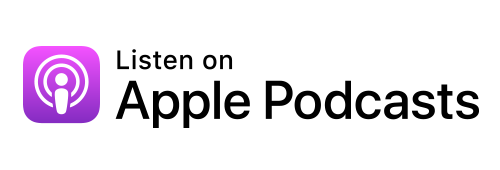




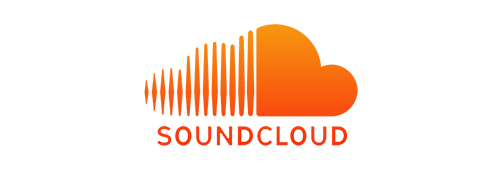


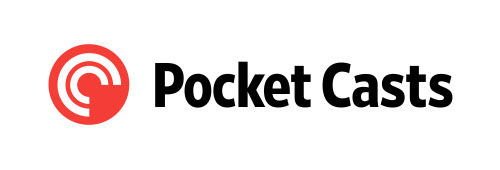
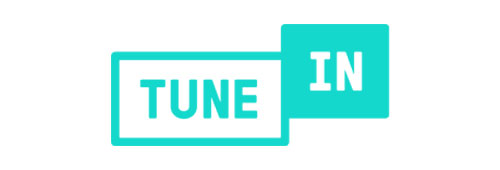
Leave a Reply